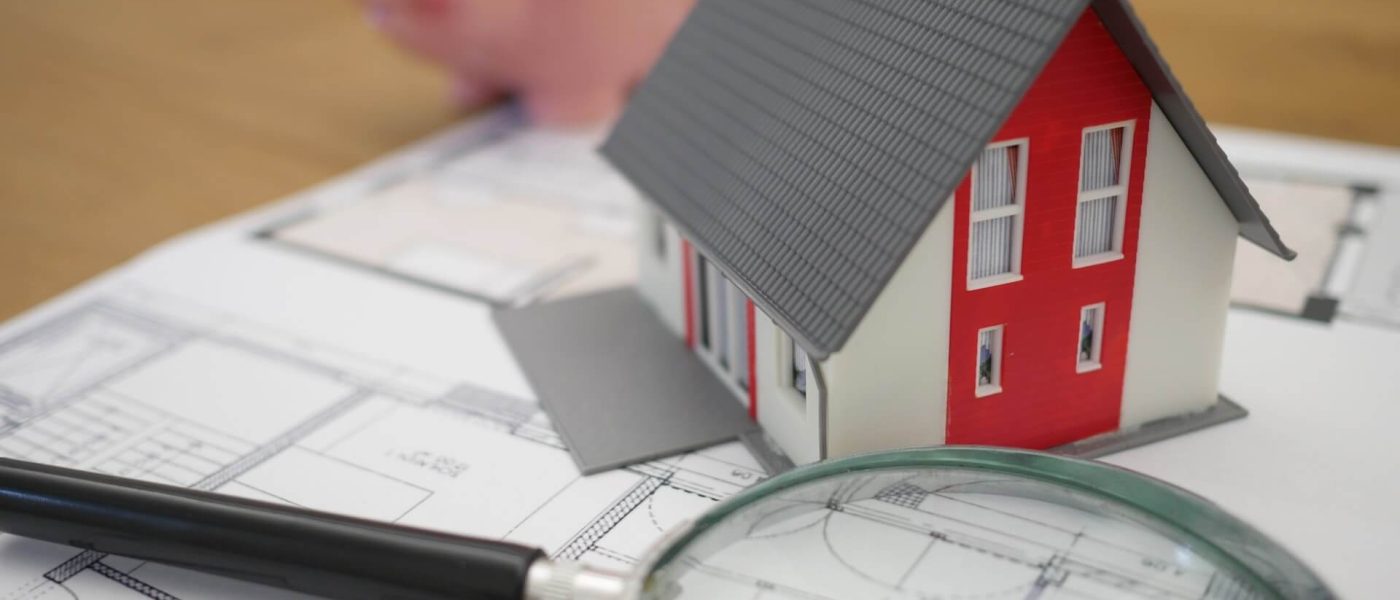The COVID-19 pandemic made people realise that what they really need is peace and quiet. Since 2020, many have decided to move to a new home located closer to gardens or parks or have a garden of their own, recent real estate market statistics show.
After Brexit and the pandemic, and even after unemployment expectedly increased and peaked in Q2 of 2021, the housing market in the UK is recovering. Still, it remains as one of the essential industries, with housing prices predicted to continue growing over the next few years.
Primary Statistics on the Real Estate Market (Editor’s Choice)
- The total residential real estate market value in the UK is £251 billion.
- Commercial property investments reached £512 billion.
- House prices rose by 0.9% in 2021.
- The total housing stock in England increased by approximately 244,000 houses.
- UK housing prices increased by 7.3% in 2020 and will keep rising.
- 30% of people who move are doing so to access a garden.
- 10 out of the 20 most expensive streets are in London.
- Kensington Palace Gardens is the most expensive street in the UK, with an average property price of over £35 million.
UK Real Estate Market
Coronavirus and Brexit affected the UK real estate industry in various ways. House prices grew as well as rents, but according to some predictions, the vaccination will keep people interested in moving.
1. The total residential real estate market value in the UK is £251 billion.
(Mordor Intelligence)
The most recent statistics on the real estate market in the UK show that the total value of the market in England and Wales was £251 billion in 2019, an almost 5% decrease from 2018. Brexit had the biggest impact on the housing market, as uncertainty in the country’s future depressed interest in making big financial investments.
2. The real estate industry employs 542,000 people in the UK.
(Statista)
The UK real estate industry includes buying, selling, renting, operating real estate, as well as performing real estate-related activities. It’s divided into two sectors — residential and commercial — and the UK real estate market size is essential to its economy, employing approximately 542,000 people.
3. Commercial property investments reached £512 billion.
(Statista)
Recent UK company data shows that there are 113,200 real estate businesses in the UK, with a turnover of more than £68 billion. The investment in commercial office space was the largest in 2018, with over £220 billion invested. The latest available national real estate market statistics show that the total capital value of commercial property investments in the UK was £512 billion in 2018.
4. The average UK house price in July 2021 was £256,000.
(Office for National Statistics)
Housing prices soared in 2020 at the fastest annual rate in the last six years. In July 2021, an 8% increase was noted from the year before, resulting in an average home price of £256,000. Centre for Economics and Business Research (CEBR) experts, however, predict a 14% drop in UK housing prices by the end of 2021, which will change the UK real estate market outlook from 2020.
5. The average monthly rent for a new tenant in the UK is £1,061.
(HomeLet)
In September 2021, the average monthly rent in the UK hit a record high of £1,061. This increased by 7.5% from last year’s figures and 0.8% from last month. Notably, real estate market statistics show that with a 12.9% increase in average rent from last year, Wales had the highest yearly price increase in the UK.
6. UK housing prices rose by 0.9% in November 2020.
(Savills)
There has been a high level of demand for housing, and the purchasing activity reached its peak in July of 2020. UK housing market data from 2020 shows that the number of sales also remained high in November, at 35% above the 2019 level. House prices rose by 0.9% in November, with the annual growth reaching 6.5%.
The pandemic restrictions were the main reason for people looking to purchase larger homes. Some predictions show that vaccination will additionally increase the desire to move. Still, it remains to be seen how that will pair up with unemployment that’s expected to peak in Q2 2021.

The London Real Estate Market
The real estate market in London is a different beast, so to speak. While average prices in prime central London fell in 2020, the overall housing prices increased, according to emerging trends in real estate in 2021. London still has some of the most expensive streets in the UK, and it doesn’t seem like that will change any time soon.
7. Average housing prices in prime central London fell by 4.3% in 2020.
(Knight Frank)
London residential property market data shows that average prices in prime central London dropped by 4.3% in 2020. The number of viewings in prime central London, however, was 11% below the five-year average. In prime outer London, these numbers were 27% above the five-year average.
8. London housing prices increased by 5.3% in 2021.
(The Week)
On the other hand, 2021 brought an increase in housing prices in London, gaining 5.3% over the year and up from 4.5% in December 2020. According to London house price trends, the capital remained among the most expensive regions in the UK.
9. Out of the 20 most expensive streets in the UK, 10 are in London.
(RenterBuyer)
London still has some of the most expensive streets in the UK. 10 out of the top 20 most expensive roads are located in the capital. Even though London keeps its dominance, the South East is challenging its place with the UK real estate market value measured in millions.
10. The average price for a detached property in London is £978,289 as of January 2021.
(Property Notify)
Based on property types, the detached housing prices saw an increase of 9.7% from January 2020 to January 2021. Semi-detached property prices increased by 10.4%, while terraced property types saw a price increase of 9.6% in the same period. Based on the latest London property price trend, flats had the smallest difference of only 1.4% from January 2020 to January 2021.
The average price for all property types was £501,320 in January 2021, with an increase of 5.3% from January 2020.
Current Real Estate Market Trends
At the moment, the total number of available homes is still not enough to cover the needs of the population. Predictions say that house prices will increase in the years to come as citizens move to find quieter places to live.
11. The total housing stock in England increased by approximately 244,000 houses.
(UK Parliament)
The housing market in the UK needs approximately 345,000 available houses per year. During 2019 and 2020, the total housing stock in the UK increased by around 244,000 houses. While the amount of new homes has been growing steadily, this number is still not enough to cover the needs of those looking to purchase, indicating a need for future new housing developments.
12. In 2022, housing prices are expected to rise by 5% across the UK.
(BuyAssociation)
UK house price trends show that housing prices will increase in 2022 due to expected economic growth. Still, there are many factors that affect this. The speed at which the UK economy will recover, the level of unemployment, vaccination, and other measures against COVID directly affect buyer sentiments.
13. UK house prices increased by an average of 7.3% in 2020 and will keep rising.
(BuyAssociation)
According to the UK property market analysis, house prices have increased by an average of 7.3%, despite the failing economy. This is likely due to the consistent desire of people to move, even in a global health crisis. According to recent reports, the price growth is predicted to continue with a 21.1% increase by 2025.
14. The largest housing price increase in the next five years is expected to be in the Northwest region.
(BuyAssociation)
Liverpool and Manchester are continuing to lead the house price increase, according to the latest real estate market stats. This is why the most significant increase of 28.8% is expected to happen right in the Northwest region. Yorkshire and Humber will follow with a projection of 28.2%, and East and West Midlands will see a 24% increase in prices.
15. 30% of people who move are doing so to have access to a garden.
(Nationwide)
There’s a noticeable change in housing preferences as a result of the COVID-19 pandemic. According to the UK real estate market report from Nationwide, 30% of people interested in moving do so because they want to have access to an outside area, like a garden. An additional 25% of buyers are looking to get away from the noise and urban life.
The UK government recently announced a plan to build more parks in certain places. Based on the current sentiment, this could increase the house prices in selected areas.
Real Estate Market Facts
While people are living in temporary accommodation, there’s a noticeable increase in permanently empty homes across the UK. 5.4 million households rent in the private sector, and there were over 40,000 new property millionaires in 2020.
16. Kensington Palace Gardens is the UK’s most expensive street, with an average property price of over £35 million.
(Mansion Global)
One of the fun property facts in the UK is that Kensington Palace Gardens located in London is the most expensive street, with an average price of £35 million per property. Other luxurious streets are Courtenay Avenue N6, Grosvenor Crescent SW1X, Ilchester Place W14, with average property prices of more than £18, £17, and £13 million, respectively.
17. 5.4 million households rent in the private sector.
(RenterBuyer)
Around 5.4 million homes belong to the private sector, 2.9 million rent from housing associations, and 2 million rent from local authorities. In total, property market stats show that 10.3 million households are rented, while 17.6 million are owned or purchased with a mortgage.
18. There are over 268,000 empty homes across the UK.
(Action on Empty Homes)
There’s a noticeable rise in empty homes in the UK. The latest government data shows that with the rise of over 40,000 vacant homes, the total number reaches 268,386 long-term empty dwellings across the country. According to UK real estate statistics, this is the biggest increase since the records started.
When it comes to London, 30,616 houses are long-term empty. Inner London saw the biggest increase in empty homes with 27% and outer London with 21%.
19. The town of Grimsby is the cheapest place to buy a 3-bedroom house in the UK.
(ToughNickel)
Real estate statistics for 2021 show that the town of Grimsby in North East Lincolnshire, England is one of the cheapest places to buy a 3-bedroom house in the UK. Grimsby is followed by Stanley, Rhondda, and Liverpool.
20. Approximately 40,000 property millionaires were created in 2020.
(The Times)
2020 seemed to be a good year for some. Nearly 40,000 property millionaires were created in 2020, and almost all of them are outside of London. The number of properties worth more than £1 million has grown since 2015. Today, there are approximately 563,240 homes with that price tag.

UK Real Estate Statistics — COVID-19 Implications
Regardless of the COVID-19 pandemic, the real estate market in the UK continued to grow. With nearly 40,000 property millionaires created, and many people looking to move to more peaceful and larger properties, growth has presided, even after an initial lull as a result of quarantine.
Real estate market statistics show, however, that there still aren’t enough homes to balance the needs of the UK residents, indicating a need for housing development projects to be considered by the UK government or private constructors.
When it comes to London, it still remains the most expensive city to live in the UK. Perhaps the pandemic has changed the minds of UK residents, with many dreaming of living in less populated places rather than the hustle and bustle of modern city life.
Frequently Asked Questions
The UK real estate industry remains an integral part of the economy. The latest employment data in the UK show that the industry employs approximately 542,000 people and is worth £251 billion. The average rent in 2019 was £953, and the average house price in October 2020 was £227,826.
House prices also rose by 0.9% in November, with the annual growth reaching 6.5%. Based on property types, the detached home price saw an increase of 9.7% from January 2020 to January 2021.
Even with the pandemic, increased unemployment, and housing price oscillations, the housing market in the UK is far from crashing. These are just some of the factors that affect the housing market, but the predictions are positive. Forecasts show that house prices will increase by 5% in 2022.
Later, the prices should reduce since the rate of economic growth will decline. Until 2025, the national estate agency predicts that the prices will rise by 21.1%.
Some signs of recession include increased unemployment, strange interest rates, and lower consumer spending. Recession definitely affects the housing market. There could be declined property values, lower sale volume, and houses for sale that stay on the market longer.
Buying a home during a recession has various benefits. There are lower interest rates, less buying competition, and reduced home prices. A recession could be the perfect time to purchase a home if you’re careful.
Home prices tend to drop during a recession. Homeowners are likely to lower their asking price, and banks are likely to sell foreclosed properties. There’s also less buying competition on the market since fewer people have the financial means to purchase a home. In return, fewer buyers mean longer selling cycles which, again, drops the house prices to sell quicker.
Asking price is defined as the amount of money that seller wants the buyer to pay for the property. That’s the price that’s presented on the listing. It’s determined by various factors, such as location, age, property condition, and local market conditions.
The asking price is rarely the final price. Prospective homebuyers will present the bid price that the homeowner can accept, reject, or give a counteroffer. This round of negotiations may go through several stages until the final price is agreed upon. The final price may also be different from the average price of properties in real estate market statistics.

